Had 2020 unfolded as any of the most previous years, I would have run the Illinois Marathon (April) as my target race in Spring and continued to train towards Marquette Marathon (September) with a handful of road and trail running events spread in between. But 2020 has been a year unlike any that I (or most of us) have experienced so far and COVID-19 has led to the postponement (if not cancellation) of a vast majority of races around the world including
- the Summer Olympics in Japan and
- the World Marathon Majors events
- Tokyo – elites-only event in March,
- Boston – moved from April to September as a virtual event,
- London – moved from April to October as an elites-only event and virtual for non-elites,
- Berlin – scheduled for September but cancelled,
- Chicago – virtual event in October, and
- New York City – virtual event in November.
I was/am fully cognizant of the fact that there are more important things in life than training for and running a race. Having friends whose livelihood depends on timing such events made me realize the value of such events beyond just getting another medal or even earning a new PR.
Training plan and compliance
As COVID-19 started impacting our lives in early March and organized races started getting either (indefinitely) postponed or cancelled, I had spent some time designing a 20-week training plan. Nordic skiing through winter months had helped establish a decent base. The idea was to start where I was (fitness-wise) in March and build from there. The general structure for this cycle was set after reviewing my training log since May 2018 (when I first started training for marathons using structured plans), reading peer-reviewed journal articles and books on exercise physiology and training methodologies, many many hours of YouTubing and electronic/in-person discussions with friends and mentors.
The plan called for high (to me) weekly mileage. I picked 71 as the number of minimum weekly miles because … 71 is a prime number and the first one above the threshold I was looking for. Silly, I know. But it worked for me. More so than getting me there faster, I thought a high mileage plan would give me a glimpse of the athlete lifestyle and strengthen my friendship with boredom (Type II fun). With no real races, I had figured it’d also help me explore the love of running and facilitate going from being a verb (i.e., I like running) to becoming a noun (i.e., I am a runner).
Combining Ray‘s quote, wider the base, taller the pyramid, with what I had learned from
- discussions with Ryan, Stephen and Dr. Roger Robinson (specifically, the Arthur Lydiard methodology),
- books (Coach Joe Vigil’s Road To The Top, Matt Fitzgerald’s 80/20 Running, Matthew Futterman’s Running To The Edge, and many many more),
- peer-reviewed research articles (from Dr. Stephen Seiler, et al) and published articles (Runner’s World, et al),
- YouTube videos (from Dylan Johnson, Jason Fitzgerald, Rich Roll, Sage Canaday, Global Triathlon Network, The Running Channel, TEDx Talks, et al) and
- Strava posts from friends, mentors, heroes and legends,
the expectation was to keep at least 80% of the total volume easy. As I had done in 2018 May (and mostly since then), I didn’t design my workout paces based on the goal/target I had in mind. Instead, I used the last known stable state – my previous race time for the marathon distance (2019 New York City Marathon – 8:20 min/mile) – as the starting point and build from there. When the time came, necessary tweaks or newer/effective workouts (i.e., marathon-specific) were adapted from various sources including another of Matt Fitzgerald’s book (Running The Dream; recommended by Shannon during week #06). Such an approach helped keep the weekly plan sustainable, individual outings enjoyable and stay injury-free throughout the training cycle.
A schematic/layout of the training cycle looked something as follows:
- 20 weeks were organized into five 4-week blocks.
- Most of the miles during the first three blocks would be run at an easy effort to further strengthen the aerobic base (or widen the base of the pyramid). The non-easy miles were to be made progressively faster (albeit at a much lower intensity).
- Should there be a real race in mid-September, the next two and a half blocks would focus on marathon-specific workouts.
- Should there still be a real race in mid-September, there’d be a progressive reduction in volume during the final three weeks and the last half a block would include a taper period.
- Every 4th week would be a recovery week. Contrary to the usual practice in periodization, I retained volume but dropped the intensity (i.e., no intervals, tempo, progression or race pace elements).
- Every non-recovery week would have intervals on Tuesdays, tempo or progression pace run on Thursdays and progression or race pace elements on Saturdays.
I know, retaining the volume during recovery weeks is frowned upon and could be a big risk (or a contributor to injuries). But it was a risk I was willing to take. The idea was to honestly assess the reality during the following non-recovery week. I promised myself that I’d be flexible with the schedule – I’d let go if something wasn’t working the way it was designed to or I’d pick up if I found something else would work better.
These might have been a child’s artwork in Calumet/Laurium, MI, and very appropriate for the current times time. But I felt like they were just as appropriate messages for me.
I won’t lie. The biggest volume week I had ever done in my life before starting this training block was 68 and that was over a year ago. I had exceeded 60-mile mark a few times this calendar year but 70 seemed a lot and so far away. I was quite skeptical and even fearful to an extent before week #01 began. But following in Deena’s footsteps (from her memoir, Let Your Mind Run) – taking one run at at a time, one mile at a time in a run and if need be (or when necessary), one landmark to another at a time – put that distance well within reach run after run, and week after week! The publicly disclosable portions of my notes for each activity are available in Strava.
|
Notation:
Easy (E) |
Speed (S) |
Long (L) |
Recovery (R) |
Tempo (T)
Distance in miles and time in h:mm:ss. Entries in the final column represent the average miles after a given number of weeks in the training cycle. |
||||||||||
| Wk |
Mon |
Tue |
Wed |
Thu |
Fri |
Sat |
Sun |
Week | Cycle | Average |
| 01 |
04/27 R 12.00 12.21 3:44:13 |
04/28 S 10.00 10.02 2:59:35 |
04/29 E 12.00 13.26 3:08:31 |
04/30 T 10.00 10.14 1:59:30 |
05/01 E 6.00 8.12 1:20:02 |
05/02 L 15.00 15.07 4:16:37 |
05/03 R 6.00 8.05 3:21:36 |
71.00
76.87 20:50:04 |
71.00
76.87 20:50:04 |
71.00 76.87 20:50:04 |
|
Starting from 2020-05-01, the first 115 and 386 miles counted respectively towards the Upper and Lower Peninsula editions of the 2020 Great Run Across Michigan. Starting from 2020-05-01 through 2020-05-31, the running activities counted towards the Birkie Challege #1 - Go The Birkie Distance. Running activities from 2020-05-01 through 2020-08-31 accounted for the 2020 Great Virtual Race Across Tennessee. |
||||||||||
| 02 |
05/04 R 12.00 12.47 2:04:22 |
05/05 S 10.00 10.01 2:28:54 |
05/06 R 12.00 14.39 3:49:34 |
05/07 T 10.00 10.04 2:58:24 |
05/08 R 12.00 10.35 2:44:37 |
05/09 L 15.00 15.30 4:18:17 |
05/10 Rest - 0:21:06 |
71.00
72.56 18:45:14 |
142.00
149.43 39:35:18 |
71.00 74.72 19:47:39 |
| 03 |
05/11 R 12.00 14.41 3:45:37 |
05/12 S 10.00 13.14 3:54:10 |
05/13 R 12.00 14.41 3:29:50 |
05/14 T 10.00 - - |
05/15 R 12.00 6.44 2:03:47 |
05/16 L 15.00 26.24 5:58:05 |
05/17 Rest 6.35 1:04:57 |
71.00
80.99 20:16:26 |
213.00
230.42 59:51:44 |
71.00 76.81 19:57:15 |
|
W03D02 (2020-05-12) was the
2020 NYRR Virtual Brooklyn Half Marathon.
|
||||||||||
| 04 |
05/18 R 12.00 14.74 3:42:39 |
05/19 E 10.00 10.41 1:43:48 |
05/20 R 12.00 14.46 3:18:05 |
05/21 E 10.00 10.04 2:30:55 |
05/22 R 12.00 8.50 3:20:38 |
05/23 L 15.00 15.62 4:20:05 |
05/24 Rest - 1:00:00 |
71.00
73.77 19:56:10 |
284.00
304.19 79:47:54 |
71.00 76.05 19:56:59 |
| Wk |
Mon |
Tue |
Wed |
Thu |
Fri |
Sat |
Sun |
Week | Cycle | Average |
| 05 |
05/25 R 12.00 13.29 2:40:46 |
05/26 T 10.00 10.16 2:51:39 |
05/27 R 12.00 13.80 3:22:16 |
05/28 S 10.00 10.03 2:27:57 |
05/29 R 12.00 17.67 3:53:11 |
05/30 L 15.00 16.31 2:22:32 |
05/31 Rest - - |
71.00
81.26 17:38:21 |
355.00
385.45 97:26:15 |
71.00 77.09 19:29:15 |
| 06 |
06/01 R 12.00 14.76 2:27:22 |
06/02 S 10.00 10.40 1:43:40 |
06/03 R 12.00 14.59 2:48:24 |
06/04 T 10.00 10.53 1:25:29 |
06/05 R 12.00 6.67 1:11:45 |
06/06 L 15.00 16.05 2:20:23 |
06/07 Rest - 1:00:00 |
71.00
73.00 12:57:03 |
426.00
458.45 110:23:18 |
71.00 76.41 18:23:53 |
|
Starting from 2020-06-01 through 2020-06-30, the elevation gain associated with running activities counted towards the Birkie Challege #2 - Climb The Birkie. Starting from 2020-06-01, the first 408 miles counted towards the Cheesehead Challenge as part of the 2020 Virtual Race Across Wisconsin. |
||||||||||
| 07 |
06/08 R 12.00 13.58 2:49:39 |
06/09 S 10.00 10.04 1:51:20 |
06/10 R 12.00 14.09 3:16:44 |
06/11 T 10.00 10.17 2:24:39 |
06/12 R 12.00 12.02 2:07:19 |
06/13 L 15.00 11.08 3:37:51 |
06/14 Rest 14.19 2:29:34 |
71.00
85.17 18:37:06 |
497.00
543.62 129:00:24 |
71.00 77.66 18:25:46 |
|
W07D07 (2020-06-14) was the 2020 Virtual Comrades Half Marathon. |
||||||||||
| 08 |
06/15 R 12.00 14.45 3:44:12 |
06/16 E 10.00 14.05 3:55:42 |
06/17 R 12.00 12.45 3:15:22 |
06/18 E 10.00 10.05 2:41:12 |
06/19 R 12.00 7.34 2:18:40 |
06/20 L 15.00 15.18 2:17:49 |
06/21 Rest 6.70 2:47:44 |
71.00
80.22 21:00:41 |
568.00
623.84 150:01:05 |
71.00 77.98 18:45:08 |
| Wk |
Mon |
Tue |
Wed |
Thu |
Fri |
Sat |
Sun |
Week | Cycle | Average |
| 09 |
06/22 R 12.00 14.58 3:20:38 |
06/23 S 10.00 13.74 3:39:55 |
06/24 R 12.00 14.40 4:09:46 |
06/25 T 12.00 15.08 3:50:58 |
06/26 R 7.00 - 1:00:00 |
06/27 L 18.00 18.66 4:04:27 |
06/28 Rest - - |
71.00
76.46 20:05:44 |
639.00
700.30 170:06:49 |
71.00 77.81 18:54:05 |
| 10 |
06/29 R 12.00 15.08 3:37:25 |
06/30 S 10.00 14.19 3:51:49 |
07/01 R 12.00 12.97 3:43:56 |
07/02 T 12.00 12.02 3:04:12 |
07/03 R 7.00 3.75 3:05:53 |
07/04 L 18.00 5.16 1:53:08 |
07/05 Rest 17.76 3:15:46 |
71.00
80.93 22:32:09 |
710.00
781.23 192:38:58 |
71.00 78.12 19:15:54 |
| 11 |
07/06 R 12.00 12.64 3:21:26 |
07/07 S 10.00 10.73 3:15:46 |
07/08 R 12.00 13.60 3:27:31 |
07/09 T 12.00 11.03 3:00:24 |
07/10 R 7.00 5.09 1:55:51 |
07/11 L 18.00 26.36 4:24:45 |
07/12 Rest - 0:45:00 |
71.00
79.45 20:10:43 |
781.00
860.68 212:49:41 |
71.00 78.24 19:20:53 |
| 12 |
07/13 R 12.00 5.14 2:18:13 |
07/14 E 10.00 13.16 2:53:49 |
07/15 R 12.00 14.29 3:48:34 |
07/16 E 12.00 15.09 4:20:43 |
07/17 R 7.00 8.11 2:19:20 |
07/18 L 18.00 19.10 4:09:00 |
07/19 Rest - 1:00:00 |
71.00
74.89 20:49:39 |
852.00
935.57 233:39:20 |
71.00 77.96 19:28:17 |
|
W12D02 (2020-07-14) was the 2020 Virtual Canal Run Half Marathon. |
||||||||||
| Wk |
Mon |
Tue |
Wed |
Thu |
Fri |
Sat |
Sun |
Week | Cycle | Average |
| 13 |
07/20 R 10.00 10.39 4:02:36 |
07/21 S 12.00 14.38 4:02:25 |
07/22 R 10.00 11.46 2:51:36 |
07/23 T 12.00 12.61 3:09:41 |
07/24 R 7.00 6.43 2:35:50 |
07/25 L 20.00 18.05 3:25:32 |
07/26 Rest 8.03 2:17:33 |
71.00
81.35 22:25:13 |
923.00
1016.92 256:04:33 |
71.00 78.22 19:41:53 |
| 14 |
07/27 R 10.00 12.55 3:13:41 |
07/28 S 12.00 12.16 4:43:23 |
07/29 R 10.00 12.54 3:39:07 |
07/30 T 12.00 12.03 2:39:34 |
07/31 R 7.00 7.63 2:20:37 |
08/01 L 20.00 20.11 3:32:29 |
08/02 Rest - 1:52:02 |
71.00
77.02 22:00:53 |
994.00
1093.94 278:05:26 |
71.00 78.14 19:51:49 |
|
W14D06 (2020-08-01) was the 2020 Virtual Lumberjack Run. |
||||||||||
| 15 |
08/03 R 10.00 12.89 5:01:38 |
08/04 S 12.00 15.92 3:58:53 |
08/05 R 10.00 10.71 3:32:59 |
08/06 T 12.00 12.56 3:43:39 |
08/07 Rest - 1:42:11 |
08/08 L 20.00 20.55 4:40:26 |
08/09 R 7.00 8.08 3:30:34 |
71.00
80.71 26:10:20 |
1065.00
1174.65 304:15:46 |
71.00 78.31 20:17:03 |
|
Starting from 2020-08-03 through 2020-08-16, the miles counted towards the
Birkie Challenge #4 - All In.
|
||||||||||
| 16 |
08/10 R 10.00 11.47 3:34:46 |
08/11 E 12.00 16.03 3:27:19 |
08/12 R 10.00 10.05 2:18:34 |
08/13 E 12.00 16.48 5:32:32 |
08/14 Rest - 1:42:13 |
08/15 L 20.00 13.36 4:29:10 |
08/16 R 7.00 13.34 4:00:46 |
71.00
80.73 25:05:20 |
1136.00
1255.38 329:21:06 |
71.00 78.46 20:35:04 |
|
W16D02 (2020-08-11) was the
2020 Virtual Australian Birkebeiner.
|
||||||||||
| Wk |
Mon |
Tue |
Wed |
Thu |
Fri |
Sat |
Sun |
Week | Cycle | Average |
| 17 |
08/17 R 10.00 11.04 3:39:56 |
08/18 S 12.00 12.25 2:26:20 |
08/19 R 10.00 9.37 3:19:00 |
08/20 T 12.00 13.11 3:42:55 |
08/21 R 5.00 5.70 2:27:23 |
08/22 L 18.00 18.20 4:35:13 |
08/23 Rest 11.83 4:04:08 |
67.00
81.50 24:14:55 |
1203.00
1336.88 353:36:01 |
70.76 78.64 20:48:00 |
|
W17D06 (2020-08-22) was the 2020 Run Wild With KLT Virtual 5k. |
||||||||||
| 18 |
08/24 R 10.00 11.35 3:51:46 |
08/25 S 7.00 7.08 3:18:38 |
08/26 R 4.00 4.35 2:43:09 |
08/27 E 5.00 5.25 2:07:45 |
08/28 R 5.00 5.25 2:38:23 |
08/29 L 17.00 16.87 4:17:18 |
08/30 L 15.00 15.42 4:04:32 |
63.00
65.57 23:01:31 |
1266.00
1402.45 376:37:32 |
70.33 77.91 20:55:25 |
| 19 |
08/31 R 6.00 6.52 3:01:15 |
09/01 S 5.00 6.03 2:53:41 |
09/02 R 6.00 6.31 3:00:01 |
09/03 T 10.00 10.03 2:34:15 |
09/04 R 6.00 6.56 2:45:31 |
09/05 L 13.00 13.12 3:32:00 |
09/06 Rest - 0:26:31 |
46.00
48.57 18:13:14 |
1312.00
1451.02 394:50:46 |
69.05 76.37 20:46:53 |
| 20 |
09/07 R 4.00 5.15 2:39:16 |
09/08 T 8.00 8.64 2:47:45 |
09/09 R 4.00 3.45 1:45:17 |
09/10 E 4.00 4.07 2:22:47 |
09/11 Rest - 1:12:09 |
09/12 E 4.00 4.09 1:19:21 |
09/13 R 26.20 26.25 5:09:55 |
50.20
51.65 17:16:30 |
1362.20
1502.67 412:07:16 |
68.11 75.13 20:36:22 |
This has by far been the most consistent training cycle I’ve completed and the most purposeful miles I’ve run in any 20-week period. This is also the first time where most activities were designed to be marathon-specific including the course of choice for most tempo and long runs over the final 8 weeks. However, it doesn’t imply that I was a saint … not by a long shot: I occasionally missed a run, procrastinated every once in a while, ate too much at times, slept less than the desired number of hours a few other times (especially when temperatures shot up), even ran on some designated rest days, and so on. But every one of those mistakes acts taught me something – mostly what not to do the next time, and I did my best to stick with the lesson.
Below are the eye candies derived by analyzing the training cycle data as deemed relevant to my process/progress by my friendly mentors/coaches (and me). Several of these are new to this training cycle and designing them made me that much better of a logger, extracter and analyzer.
Training eye candies
Vitals (sleep, resting heart rate and weight) are/were measured every day shortly after waking up. If a measurement wasn't taken on a given day (say, due to laziness), then the recorded value from the previous day is used for computing the 7-day moving average.
Beyond the metrics and eye candies
Keeping a detailed track of marathon training log since 2018 May, and
reviewing it periodically to learn things I could have done better and
making a conscious effort to do them better during this training cycle ...
was a very time consuming yet extremely beneficial endeavor. Before
beginning this training cycle, I relied heavily on the usual tangible
metrics - distance, time, pace, heart rate, cadence, stride length,
respiration rate, ground contact time, power, leg sprint stiffness, etc. -
measured by the Garmin Forerunner 945 as well as the Stryd pod. There
wasn't anything wrong about such metrics - I still collect and analyze
them.
However, there was a conscious focus on metrics beyond the reach of Garmin
and Stryd during this training cycle:
- staying injury-free throughout the 20-week period - suggesting that my body was capable of handling the higher volume that had so far seemed out of reach,
- the ability to hold coherent conversations with friends on the run in full and meaningful sentences at various paces,
- documenting recovery times after each hard work using lack of hitch or gimp while walking,
- looking for and being OK with rational and logical explanations for not so good workouts (e.g., poor sleep, improper nutrition, cumulative fatigue, et al.), and
- a mentality that's best summarized in a simple phrase a certain head coach of a certain NFL team once used repeatedly as his response to every single question from the media/journalists after his team got clobbered in a nationally televised prime time encounter: We're On To Cincinnati.
It wasn't easy in the beginning but learning not to extend the impact one not so good workout (or even just a portion thereof) beyond that workout was necessary. Equally important was to learn to celebrate any minor/major milestones along the way - a good workout, a new PR for a mile or a half marathon, etc. - something I wasn't very good at until recently. Irrespective of whether we were on to Cincinnati or elsewhere or stayed put, the training cycle was long enough that such learning opportunities presented themselves on their own - for the good and not so good outings.
As the training cycle progressed, I registered for a half marathon and a handful of marathons with the hope that circumstances would allow for at least one of them would be a live and an in-person event. Given the uncertainties of this pandemic, there was no guarantee back then that any of these events would actually take place. And most had to be either cancelled completely or made virtual. With very little hope as week #16 ended, I had been leaning towards dropping the intensity and picking up easy volume from week #17. The diligence and perseverance of the organizers ensured that this event – Holland Haven Marathon – would indeed go on thanks to the diligence exercised by the organizers and with several necessary changes to comply with the guidelines from relevant authorities.
Race weekend
At no point during the taper period or the race weekend, did I feel the need for having done one more long run or one more interval session or anything like that. The calmth is something that I can very easily get used to! Having taken Thursday off from work (thanks be to my boss) helped carefully pack everything I needed for this trip. The 530+ mile drive to Grand Haven included customary pit stops for food and to stretch my feet and was uneventful. Checking into the hotel was a breeze and after spending some time with the Mitchells, I called it a night – the night before the night before – around 10:30 pm.
A full night of sleep led to a restful morning. Light rain delayed the start of the final shakeout run by an hour or so but it only ensured I ran in daylight. Shannon helped pick a beautiful course along the shores of Lake Michigan and the run, including a few strides and stops for photos, was completed by 8 am. After a trip to the Morning Star Cafe for some grub, I spent rest of the morning off my feet. A short visit with my good ole friends was followed by driving along the course – to get an up close and personal view of the course. Drive through packet pickup was quick and involved a chat with the race director, and the dinner – a burrito from Arturo’s Tacos – was along the shores of Lake Superior. The night before the race day ended early as planned around 8:30 pm.
Race day morning came early – around 3:30 am. Bringing my coffeemaker from home was a good idea – I neither had to leave the confines of my room at that witching hour looking for gas station coffee nor did I have to acquire the said gas station coffee the night before. Shannon picked me up around 5:20 am and we got to the starting area with plenty time to complete my warm-up routine in spite of a light drizzle that wasn’t in the forecast the last I had checked weather report.
It had been a long long while since I wore a headlamp in a race. But given the 6 am start, lack of sufficient lighting along the course (i.e., bike path) and sunrise around 7:15 am, it was a necessity. My bib number was 32 – it wasn’t a prime number; it wasn’t a direct product of two primes – m x n – where m and n both are prime numbers; it was, however, the result of one prime number raised to the power of another prime, mn, m = 2 and n = 5. Understanding that bib numbers were seeded by our approximate estimate of finish times, I placed myself at the very end in a wave about 33-34 runners. The race started on time and with an efficiency that’d make any military proud. And I won’t lie – given the times, it felt very surreal to be starting a real race!
|
Goal vs Reality
Goal: 26.22 mi in 3:05:00 (7:03 min/mi) Reality: 26.25 mi in 3:27:44.0 (7:54 min/mi) |
|||||||
| Distance mi |
Lap Time m:ss |
Lap Elevation feet |
Total Time h:mm:ss |
Total Elevation feet |
Avg Pace min/mile |
Projected Finish Time h:mm:ss |
Differential Goal Time h:mm:ss |
| 1.00 | 7:12 | 26↑ 39↓ | 0:07:12 | 26↑ 39↓ | 7:12 | 3:08:46 | 0:03:46 |
| 2.00 | 7:19 | 23↑ 16↓ | 0:14:31 | 49↑ 55↓ | 7:15 | 3:10:06 | 0:05:06 |
| 3.00 | 7:17 | 16↑ 20↓ | 0:21:48 | 65↑ 75↓ | 7:16 | 3:10:31 | 0:05:31 |
| 4.00 | 7:20 | 26↑ 43↓ | 0:29:08 | 91↑ 118↓ | 7:16 | 3:10:31 | 0:05:31 |
| 5.00 | 7:12 | 23↑ 13↓ | 0:36:20 | 114↑ 131↓ | 7:15 | 3:10:06 | 0:05:06 |
| 6.00 | 7:11 | 23↑ 7↓ | 0:43:31 | 137↑ 138↓ | 7:15 | 3:10:06 | 0:05:06 |
| 7.00 | 7:12 | 13↑ 13↓ | 0:50:43 | 150↑ 151↓ | 7:14 | 3:09:39 | 0:04:39 |
| 8.00 | 7:06 | 36↑ 46↓ | 0:57:49 | 186↑ 197↓ | 7:13 | 3:09:13 | 0:04:13 |
| 9.00 | 7:09 | 23↑ 23↓ | 1:04:58 | 209↑ 220↓ | 7:13 | 3:09:13 | 0:04:13 |
| 10.00 | 7:26 | 62↑ 59↓ | 1:12:24 | 271↑ 279↓ | 7:14 | 3:09:39 | 0:04:39 |
| 11.00 | 7:21 | 56↑ 26↓ | 1:19:45 | 327↑ 305↓ | 7:15 | 3:10:06 | 0:05:06 |
| 12.00 | 7:09 | 39↑ 46↓ | 1:26:54 | 366↑ 351↓ | 7:14 | 3:09:39 | 0:04:39 |
| 13.00 | 7:14 | 33↑ 26↓ | 1:34:08 | 399↑ 377↓ | 7:14 | 3:09:39 | 0:04:39 |
| 14.00 | 7:08 | 0↑ 26↓ | 1:41:16 | 399↑ 403↓ | 7:14 | 3:09:39 | 0:04:39 |
| 15.00 | 7:28 | 0↑ 0↓ | 1:48:44 | 399↑ 403↓ | 7:14 | 3:09:39 | 0:04:39 |
| 16.00 | 7:53 | 3↑ 10↓ | 1:56:37 | 402↑ 413↓ | 7:17 | 3:10:58 | 0:05:58 |
| 17.00 | 7:38 | 20↑ 26↓ | 2:04:15 | 422↑ 439↓ | 7:18 | 3:11:24 | 0:06:24 |
| 18.00 | 8:22 | 30↑ 23↓ | 2:12:37 | 452↑ 462↓ | 7:22 | 3:13:09 | 0:08:09 |
| 19.00 | 8:29 | 10↑ 10↓ | 2:21:06 | 462↑ 472↓ | 7:25 | 3:14:28 | 0:09:28 |
| 20.00 | 8:57 | 16↑ 3↓ | 2:30:03 | 478↑ 475↓ | 7:30 | 3:16:39 | 0:11:39 |
| 21.00 | 8:48 | 3↑ 13↓ | 2:38:51 | 481↑ 488↓ | 7:33 | 3:17:57 | 0:12:57 |
| 22.00 | 8:00 | 30↑ 30↓ | 2:46:51 | 511↑ 518↓ | 7:35 | 3:18:50 | 0:13:50 |
| 23.00 | 8:55 | 7↑ 16↓ | 2:55:46 | 518↑ 534↓ | 7:38 | 3:20:09 | 0:15:09 |
| 24.00 | 11:28 | 30↑ 33↓ | 3:07:14 | 548↑ 567↓ | 7:48 | 3:24:31 | 0:19:31 |
| 25.00 | 9:36 | 13↑ 3↓ | 3:16:50 | 561↑ 570↓ | 7:52 | 3:26:15 | 0:21:15 |
| 26.00 | 9:01 | 0↑ 26↓ | 3:25:51 | 561↑ 596↓ | 7:55 | 3:27:34 | 0:22:34 |
| 26.25 | 1:55 | 0↑ 0↓ | 3:27:46 | 561↑ 596↓ | 7:54 | 3:27:08 | 0:22:08 |
| The final cumulative time, 3:27:46, may not match the official time (3:27:44.0) owing to rounding errors. Starting my watch a few seconds before the start and stopping it a few seconds after crossing the finish line can be an additional reason for this discrepancy. The overall distance, 26.25 mi, may not match the designated (or certified) event distance (26.22 mi) owing to idiosyncrasies associated with GPS data collection OR my inability to take the tangents OR the aforementioned early start/late stop reasons, and in some rare cases, incorrectly measured (or advertised) courses or DNFs. As a result, the cumulative pace and the projected finish time might not match the official values as well. | |||||||
I started slow and within myself as planned and there wasn’t a lot of surprise in the early miles. Heart rate seemed inexplicably high since I wasn’t feeling it. Remembering what Bill Lamkin had taught me a while ago, it was explicable – my watch was experiencing Cadence Lock (see the mile by mile splits/analytics below. HR seems awfully close to the cadence). Given that this was a race with a running clock, there was no opportunity to stop the run, cancel the activity, restart the Garmin and expect that Cadence Lock would go away. It was just easier to let it go and remember not to put too much stock into the HR data from this activity. After a couple instances of experiencing uneven ground (i.e., foot landing an inch or two lower/higher than expected), some of the mental energy was dedicated in constantly scanning a few strides ahead over the first 7-8 miles. Miles 9 through 11 had a bit of texture – compared to rest of the course – and I was ok again running within myself and a few ticks slower than the planned pace.
A good proof of the conservative start came around the halfway point – 1:34:57 (7:14 min/mile, 8.29 mph). With all the hills behind me by this point, I thought I was on track for a desirable finish – needing to bring the average pace down by about 10 seconds/mile to achieve the primary goal and if things didn’t go nearly as planned, about 5 seconds/mile to achieve the secondary goal. But the second half was a story and an experience (or three) unto itself. By mile 16, the primary goal seemed out of reach and by mile 18, even the tertiary goal seemed like it’d need a lot of effort. Thoughts of taking a DNF crossed my mind a handful of times during this stretch, and if not for Shannon’s belief and encouragement, I would have certainly opted for it.
| Goals (in order of importance) and their status | ||
| 01 | Finish below 3:05:00 (minimum: 7:04 min/mile, 8.49 mph) | No |
| 02 | Finish below 3:10:00 (minimum: 7:15 min/mile, 8.28 mph) | No |
| 03 | Finish below 3:29:27 (minimum: 7:59 min/mile, 7.52 mph) and earn a PR | Yes |
In light of the experiences over 5 miles after the halfway point, my mental game was off. Legs weren’t turning over. My pace dropped by a noticeable amount . There was quite a bit of walking too. I eventually crossed the finish line at 3:27:44 (official result here) – 59/292 overall, 47/161 in gender and 6/24 in AG.
Back to the Yoop
Shannon and his lovely better half, Lis, dropped me off at the hotel after the run. I started the return journey after getting some food and stocking up on coffee. Several pit stops later – one of which included spending some time with Jess and Tim in Marquette – I arrived safely in Houghton on Monday morning.
Having let some time pass by and take with it any irrational feelings dissecting my performance (or what seems like, lack thereof), I understand that there are plenty of runners who’d happily accept a sub-3:30 finish time in a marathon. I was one of them less than a year ago. A year ago, if anyone had told me I’d be off my mental game, struggle as much as I did in the second half and yet come out with a sub-3:30 finish let alone earn a new personal best by ~100 seconds, I’d have kissed their feet. Only through the lens of the markers the past 20-weeks indicated of progress on endurance, fitness, strength and such, a 3:27:44 finish time seems like an underachievement. I’ll do better next time.
Quite a while ago, a good ole friend of mine shared the above quote from James Thurber with me in a note. I have some idea as to what I am running from (i.e., being a verb) and what I am running towards (i.e., becoming a noun). While the I am still working on figuring out a decent answer to why, in the everlasting words of the same certain head coach of the same certain NFL team,
We’re on to Cincinnati
Thanks be to
the rejections and opportunities life has brought my way, event folks (organizers, sponsors, volunteers, timers, law enforcement officials, photographers, fellow participants and spectators) and my family of good friends, mentors and coaches in and outside of my community for all the unexpected, undeserved and unrewarded acts of kindness and constant encouragement as well as offerings of constructive criticism to improve myself as a human and an athlete. I am eternally grateful to all those who let me train with them, who shared their meals and experiences with me, who helped keep me in good health, who helped me stay the course, and who cheered me on from home or along the course.

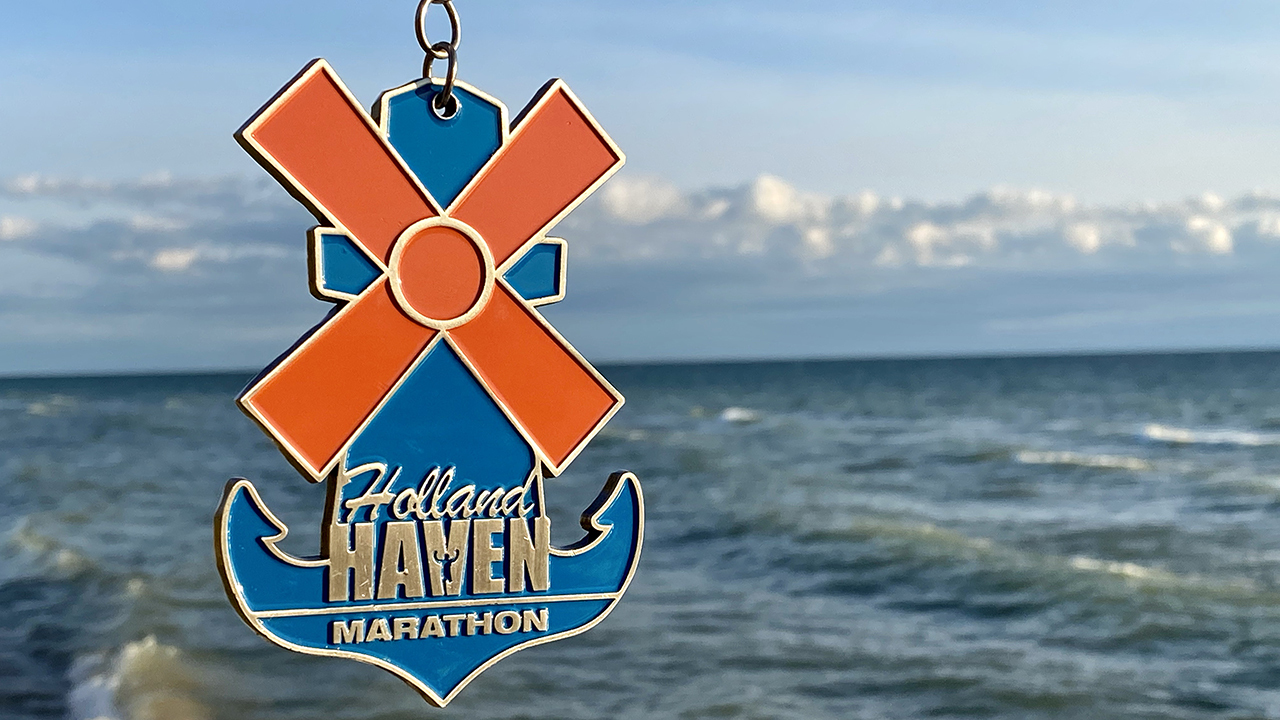

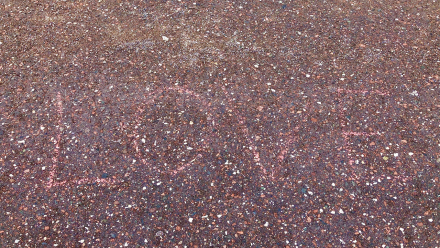

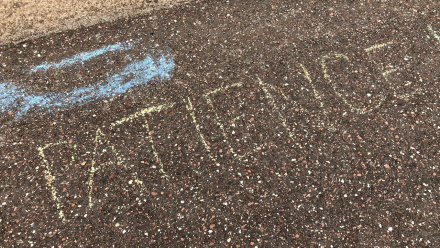
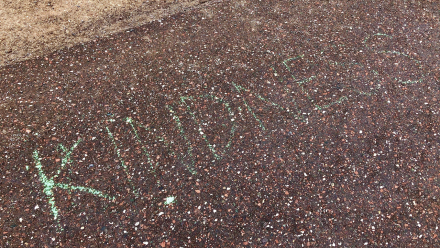
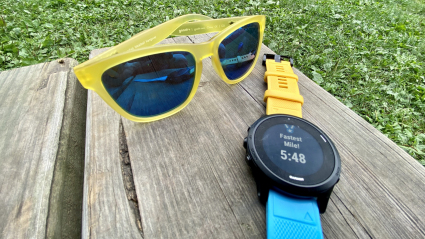
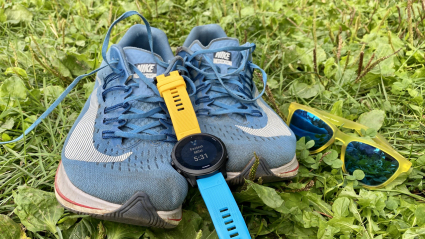
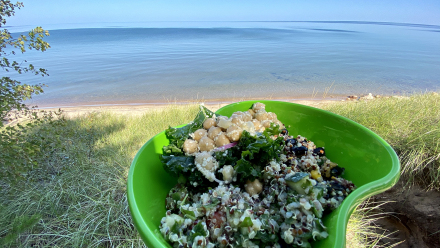
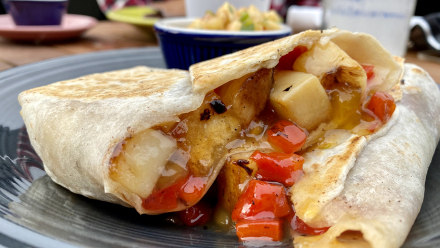
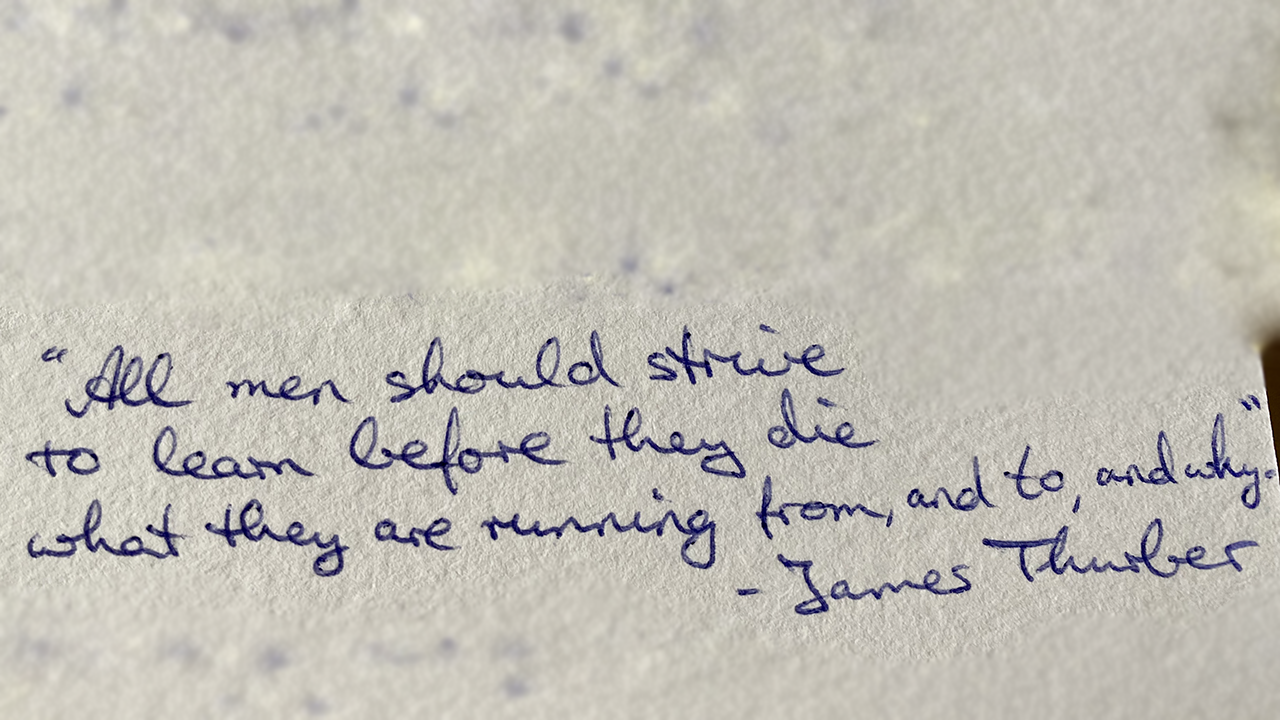



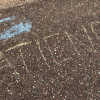
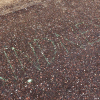






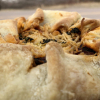



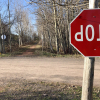
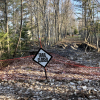
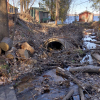

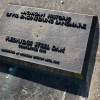



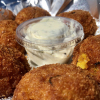
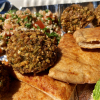
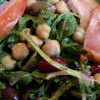










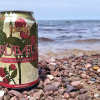
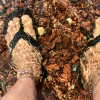
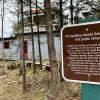










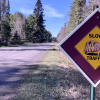
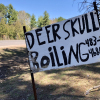





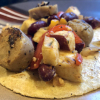










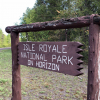
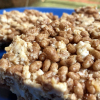
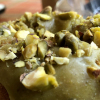




















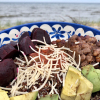
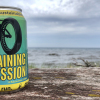












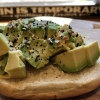

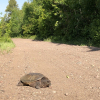


















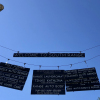





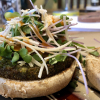



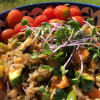









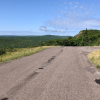
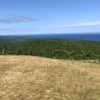






















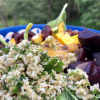









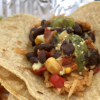
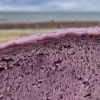
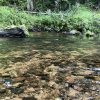


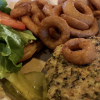


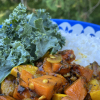
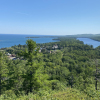
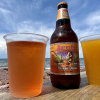

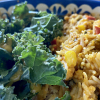




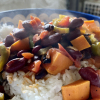


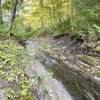


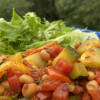

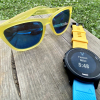



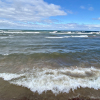
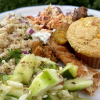



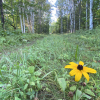

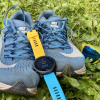





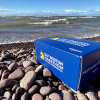
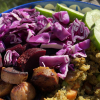

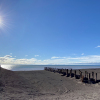

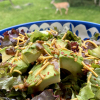
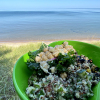
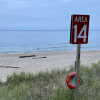


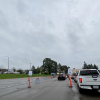
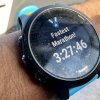
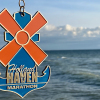
Gowtham, I couldn’t help but write to you. I saw your comment on ‘The Fitz’ Facebook page. I got there because I saw that Gordan Ramsey was there this past week. We went to the UP in late August for a week and loved our whole trip including visiting Houghton and The Fitz. That was the best dinner and location of our entire trip. I loved it so much that I immediately started looking at real estate to buy something!! I was surprised to see an Indian commenting on The Fritz as it’s so remote so had to look you up. I’m married to an Indian from Chennai originally. We moved to and lived in Bangalore for 10 years but moved to Ann Arbor MI where we currently live. My husband is an engineer so seeing your website just made me smile. Am thrilled to see Indians celebrating Michigan, the UP, skiing, and great BBQ.
Good evening, Cheryl!
Thank you, and I apologize for delayed response.
Next time you make a trip to the Yoop and this area, please let me know – would be great to meet you. If the Fitz is open, I will happily meet you there for a meal!